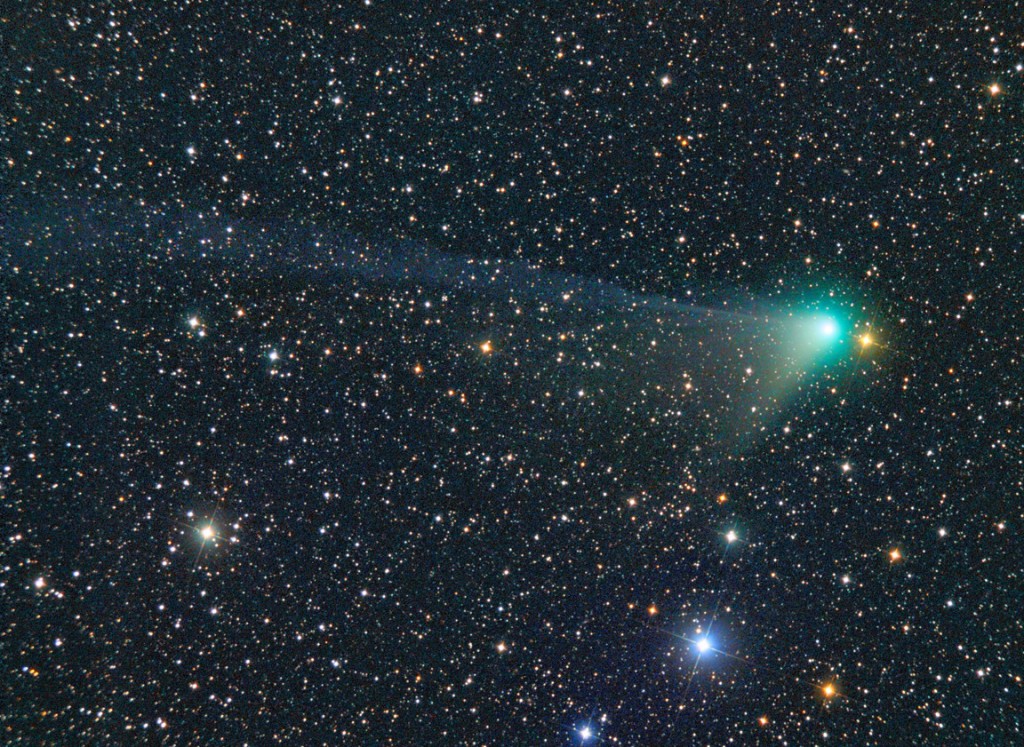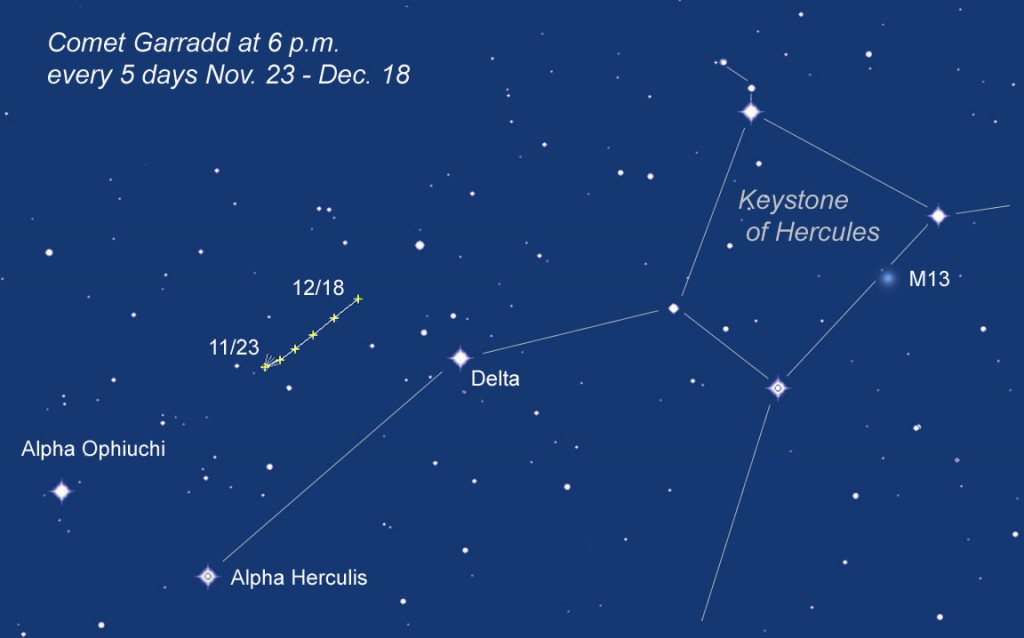
© Michael JaegerComet Garradd on November 19 shows a classic dual tail. The longer, blue streak is the ion tail. The dust tail is shorter and glows pale yellow from reflected sunlight.
Remember Comet Elenin? Hopes were high it would become the best comet of 2011, but instead it dissolved into a cloud of dust. Amateur astronomers are still tracking its fading remnants as the comet passes the Pleiades star cluster in Taurus this week.
The brightest comet of the year never received the dire publicity that stuck with Elenin to the end. Comet Garradd was well-placed and easily visible in binoculars this summer as it crossed the Milky Way en route to its current residence in the sprawling constellation Hercules. Underdog Garradd remains a 7th magnitude fuzzball in binoculars this month. I looked it up recently on one of the few clear nights we've had in November and was thrilled to see two tails sticking out of the comet's bright, fuzzy head or coma. Both show wonderfully in Michael Jaeger's photo and were just as pretty in my 15-inch scope though much more subtle.
Comet Garradd is 195 million miles away or about twice our Earth's distance from the sun. That gap will close to 118 million miles by early next March, when the comet will brighten by a magnitude, placing it within naked-eye range from the countryside. Take a look now before it drops too low in the western sky and the moon returns. The best viewing time is right at the end of evening twilight as soon as the sky gets dark.

© AstroBob/Created with Chris Marriott's SkyMap softwareUse this finder chart to track down Comet Garradd. It inches slowly northward only a few degrees in the coming month. The map shows Hercules at around 6 p.m. at the end of evening twilight in the western sky. M13 is a bright globular cluster and stars are shown to 7th magnitude.
Binoculars still show a soft, puffy glow and perhaps a hint of a tail. A modest-sized telescope will show the dust tail and maybe even a hint of the ion tail. Dust tails are formed of smoke-sized particles of dust embedded in cometary ice. Heat from the sun vaporizes the ice and releases the particles which fall behind the comet in the form of a tail measuring between 600,000 and 6 million miles long. Comet dust reflects light just like good old house dust or cigarette smoke. Ion tails fluoresce blue when ultraviolet light in sunlight breaks down carbon monoxide jetted by the comet and are often much longer - up to 100 million miles.





...just won't go away, will it?